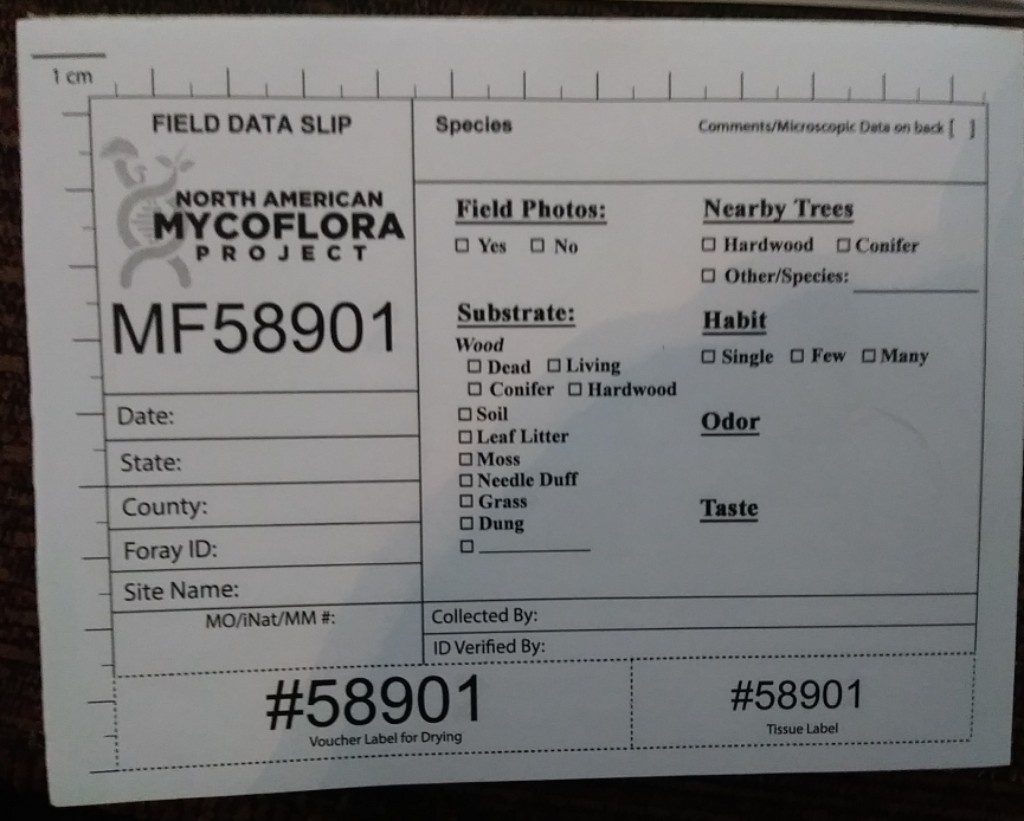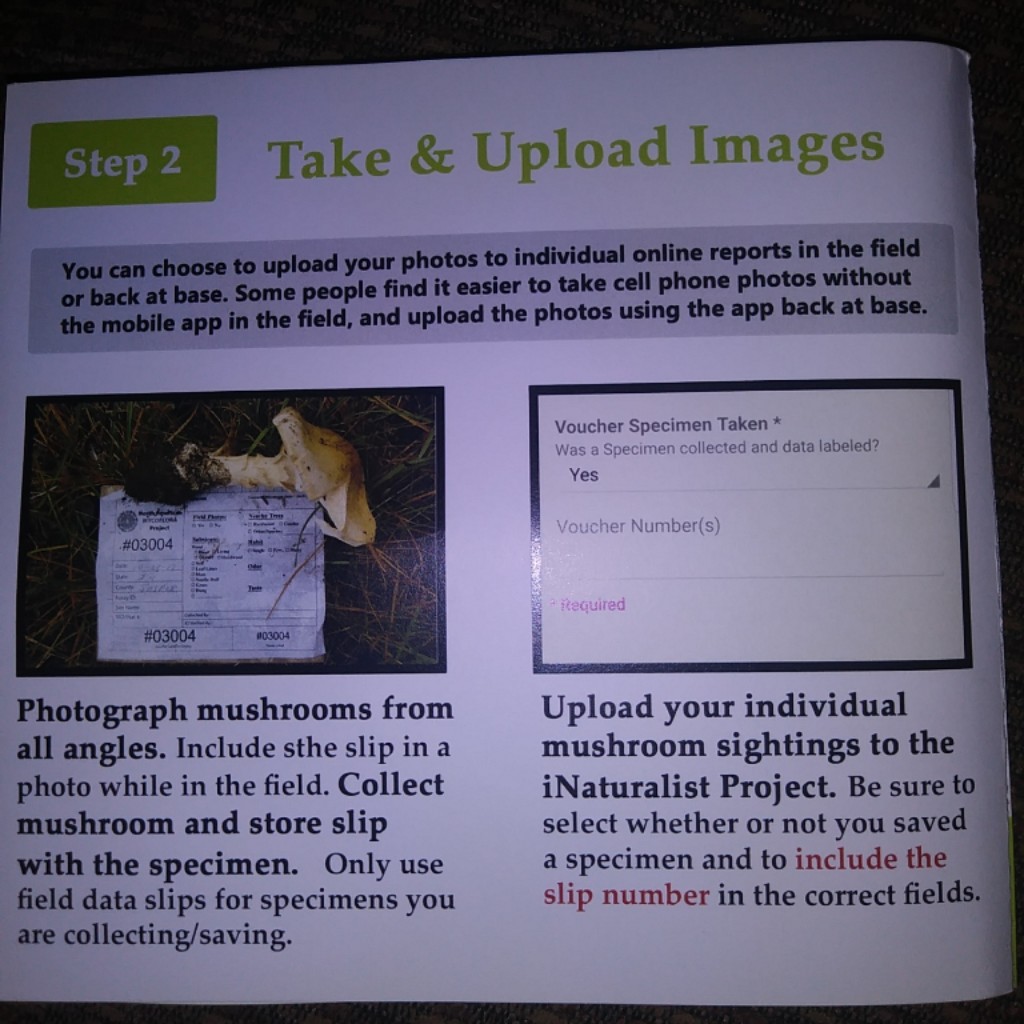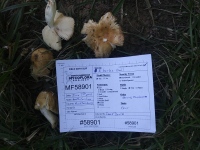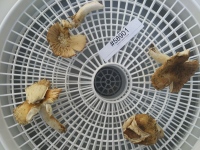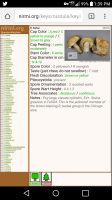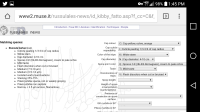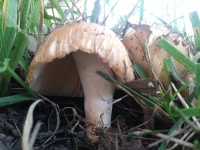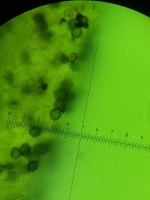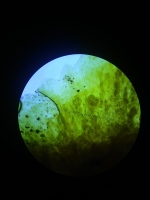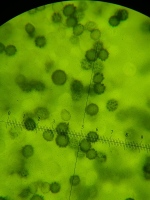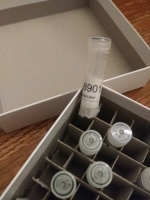

Russula
Of
North
America
A North American Mycoflora Project
http://mycoflora.org/

This is a citizen science project designed to build on the work by Ray Fatto, and Geoffery Kibby, and their 1990 "Key to Russula of Northeastern North America", and expand it to include the entire continent. Producing an updated synoptic key to the species of the genus Russula found throughout North America.
Both the novice, and the experienced can help as citizen scientist right along with mycological professionals, and Russulologists by providing well documented collections of interesting Russula species found in North America.
This should include peeling of the cap skin, scent, taste test(do not swallow), and answers to as many of the items on the foray voucher as posible.
This should include peeling of the cap skin, scent, taste test(do not swallow), and answers to as many of the items on the foray voucher as posible.
If you are a mycological professional, or Russulologists willing to help please contact me directly by email to coorodinate information, Questions, & Answers.
For updates on this project please join the "Russulas and Lactarius of North America" Facebook group at:
https://www.facebook.com/groups/993182930773482/
The Scientific classification is as follows:
Kingdom: Fungi
Division: Basidiomycota
Class: Agaricomycetes
Order: Russulales
Family: Russulaceae
Genus: Russula
Division: Basidiomycota
Class: Agaricomycetes
Order: Russulales
Family: Russulaceae
Genus: Russula
Species: ""
Over 750 species have been named, and there are likely to be well over 1000 in the genre.
Russula are fairly easy to separate from the other genre by the combination of having similar overall structure, and these other attributes:
1. They have no volva, veil material, or ring zone.
2. Gill structure is brittle, and adnate to adnexed, or slightly decurrent.
3. It's context has a tendency to break away like a peice of chalk rather than bend(This is due to the unusual small ball like less filamentice cell structure of the context).
4. No latex leakage from damaged areas(this separates Russula from Lactarius, and other similar fungi in the family Russulaceae).
5. White, cream, or yellow, and always amyloid spores.
Russula are mycorrizal which means they cannot live without a shared association with another organism like a tree, or plant. In fact these mycorrizal fungi help trees, and plants by way of water, and minerals in exchange for the plant based sugars.
This genre is made up of many colors, and are considered some of the most prolific mushrooms found in Noth America.
While recconizing a Russula is easy determining its species can be much more difficult. The red look-a-like species alone number well over 100 in North America.
In the late 1800s the genus was artificially divided into five sections to simplify identification by Rolf Singer as shown here:
1. Compactae
2. Decolorantes
3. Ingrantae
4. Rigidae
5. Russula
However, these differant sections have little to nothing to do with genetic association, and basically only point you to groups of posibilities based on morphology.
Some of the Russula keys based on the Fatto, and Kibby 1990's work are whle excellent, and in use have used European species names to accomodate North American species look alikes, and are limited in scope to the Northeast United States even though they include hundreds of named species. The look alikes may, or may not be genetically the same as those found in Europe.
Now with advances in social media, digital photography, and DNA sequencing we can expect to be able to produce a much more complete, and more comprehensive product.
As people who collect, and study Russula learn a few additional aspects of these fungi fruits that help us make better identifications to the species level.
1. How far you can peel the cuticle(cap skin) from the edge toward the center of the cap(< .25%, 26%-50%, 51%-.75, or >75%). This is best done while the mushroom is still fresh in the field as once dry it will not always peel the same. A percentage, of seperability is simply added to the foray voucher.
2. Use of reagents like Sulphovanillin(a mix of sulpheric acid, and vannillin) to stain cystidia to produce a color reaction. This is done in the microscopy lab.
With the use of DNA, and rna annalysis of fungi we have yet another piece of the puzzle.
Using these many atributes along with technology to narrow the diagnosis of species provides for a much more accurate, and fulfilling identification experience.
Here basically anyone with a cellphone camera, access to the internet, and finding interesting Russula species can contribute to the project. No matter where you are in North America you too can contribute.
You may if you would like to provide the microscopy, and collect chemical reaction information. However, you providing microscopy is not neccesary. Any needed Microscopy, and all DNA sampling will be handled by the project orginizer.
What is needed by volunteers is good quality close-up photos in situ showing all aspects of the fresh collection with a filled out foray voucher. Dehydrate the collection to cracker dry condition along with a voucher label. Upload you pictures, and collection data to the iNaturalist website at:
https://www.inaturalist.org/projects/mycoflora-russula-of-north-america-taxa-focused-project . Then, place the dried collection, and voucher in a plastic zipper bag, put those into small mailing carton with light shipping protection, and send it to:
David Daniel in care of
Mushroom Club Of Charlotte NC
12025 Shandon Circle
Charlotte NC 28226
If you have any questions you can reach out by email at:
contact@mushroomclubofcharlottenc.com
David Daniel President of the Mushroom Club Of Charlotte NC has volunteered to accept the lead of this Online Taxa-based project, and help with organization of the collections, DNA submission, and data.
This project is in need of highly complete collections sent that include good photography, cracker dried collections, and good documentation on iNaturalist in order to secure continuing funds for DNA sequencing, and fungarium storage. At this time I have <30 sample collection vials available for sequencing. If you would like to secure sequencing for your collections by providing the funds yourself cost will be as little as $10 per sample/collection.
Collection data analysis will be posted online where you, and other will be able to retrive for comparrison, and study.
Your contributions may become part of a scientic paper, refference, Monograph, or guide book.
For more information on the Russula genus check out this excellent link:
Links to Rolf Singer like based keys:
Links to Keys based on the 1990 work of Ray Fatto, and Geoffery Kibby can be found here:

